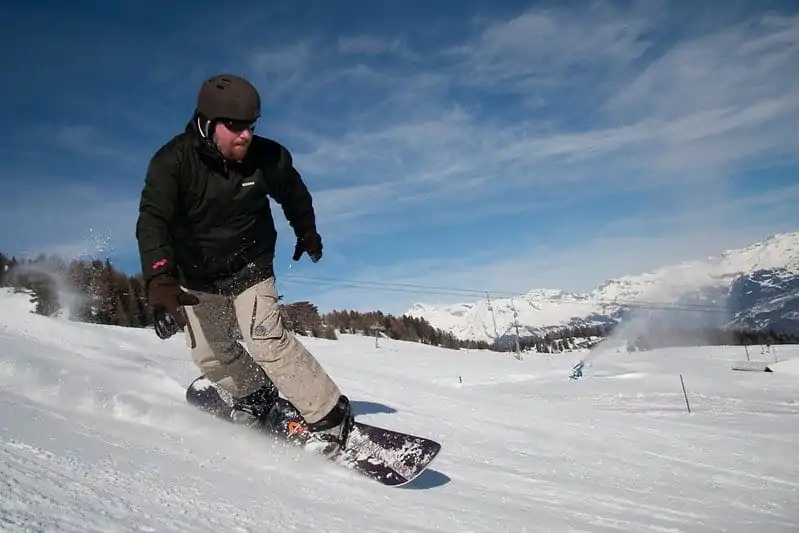
One of the most important aspects of snowboarding is understanding your stance and angles. Your stance and angles are the foundation of your riding posture, and they can have a significant impact on your performance and comfort on the mountain. In this article, we will discuss the importance of understanding snowboard stance and angles and how to determine the right stance and angles for you.
What is Stance?
Your stance refers to the position of your feet on the snowboard. There are two main types of stances: regular and goofy. A regular stance means that your left foot is in front of your right foot, while a goofy stance means that your right foot is in front of your left foot.
Determining your stance is important because it will affect your balance and control on the mountain. Most people naturally have a dominant leg, which should be placed in the rear of the snowboard for optimal control. However, some people may feel more comfortable with their dominant leg in the front.
What are Angles?
Your angles refer to the degree of the angle that your bindings are set at in relation to the snowboard. There are two main angles to consider: the front binding angle and the back binding angle.
The front binding angle is the angle between the front binding and the snowboard. The back binding angle is the angle between the back binding and the snowboard. These angles can have a significant impact on your riding posture and performance.
Why is Understanding Stance and Angles Important?
Understanding your stance and angles is important because it can affect your balance, control, and comfort on the mountain. If your stance and angles are not properly adjusted, you may experience discomfort or even injury while riding.
Additionally, your stance and angles can affect your riding style. A wider stance can provide greater stability and control at high speeds, while a narrow stance can provide greater maneuverability and flexibility.
How to Determine Your Stance
There are several ways to determine your stance, including:
Natural Stance: Stand with your feet shoulder-width apart and have someone push you from behind. Whichever foot steps forward first is likely your dominant foot and should be placed in the rear of the snowboard.
Slide Test: Put on a pair of socks and slide across a smooth surface. Whichever foot you use to push off is likely your dominant foot and should be placed in the rear of the snowboard.
Skateboard Test: Stand on a skateboard and have someone push you from behind. Whichever foot you use to maintain your balance is likely your dominant foot and should be placed in the rear of the snowboard.
How to Determine Your Angles
There are several factors to consider when determining your binding angles, including:
Riding Style: Your riding style can influence your binding angles. If you plan to do mostly freeride and powder riding, you may want a more wide-set stance with a higher back binding angle. If you plan to do mostly park and freestyle riding, you may want a more narrow stance with a lower back binding angle.
Personal Preference: Your personal preference is also important when determining your binding angles. Some riders prefer a more duck-footed stance with both bindings pointed outward, while others prefer a more forward-facing stance.
Skill Level: Your skill level can also influence your binding angles. Beginners may benefit from a more forward-facing stance with a lower back binding angle, while advanced riders may benefit from a more duck-footed stance with a higher back binding angle.
There are two main types of binding angles: positive and negative. Positive angles occur when the bindings are angled toward the front of the snowboard, while negative angles occur when the bindings are angled toward the back of the snowboard. Most riders use a combination of positive and negative angles to achieve their desired stance.
Conclusion
Understanding your snowboard stance and angles is essential for a successful and enjoyable riding experience. Your stance and angles can affect your balance, control, and comfort on the mountain, as well as your riding style. When determining your stance and angles, consider your riding style, personal preference, and skill level. With the right stance and angles, you can improve your performance and enjoy a fun and exciting ride on the mountain.

